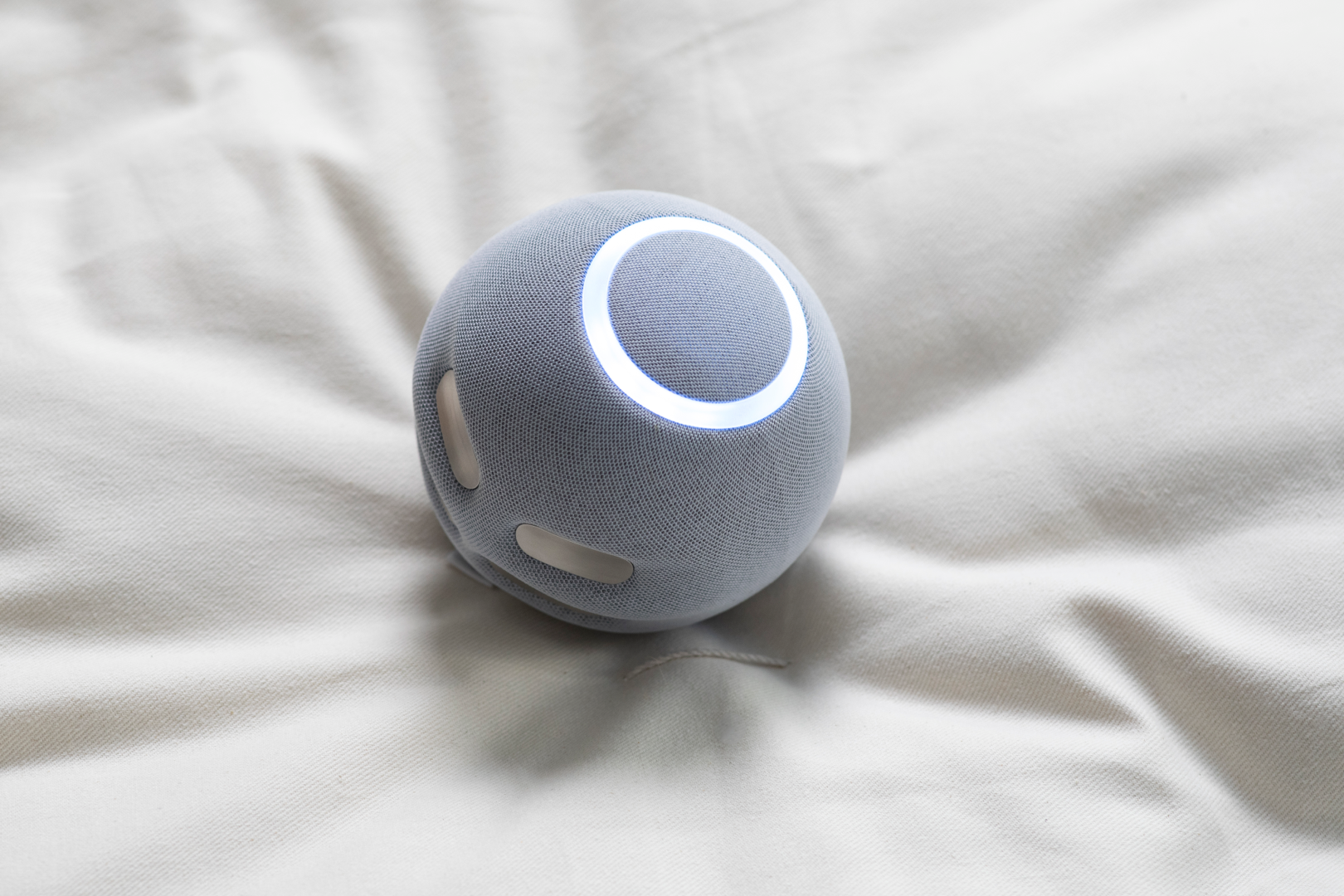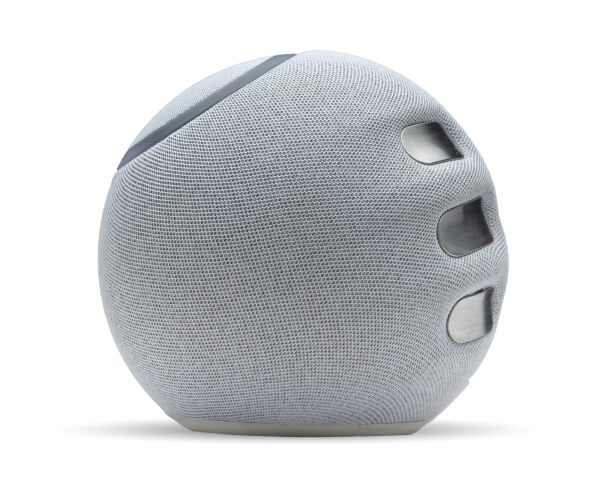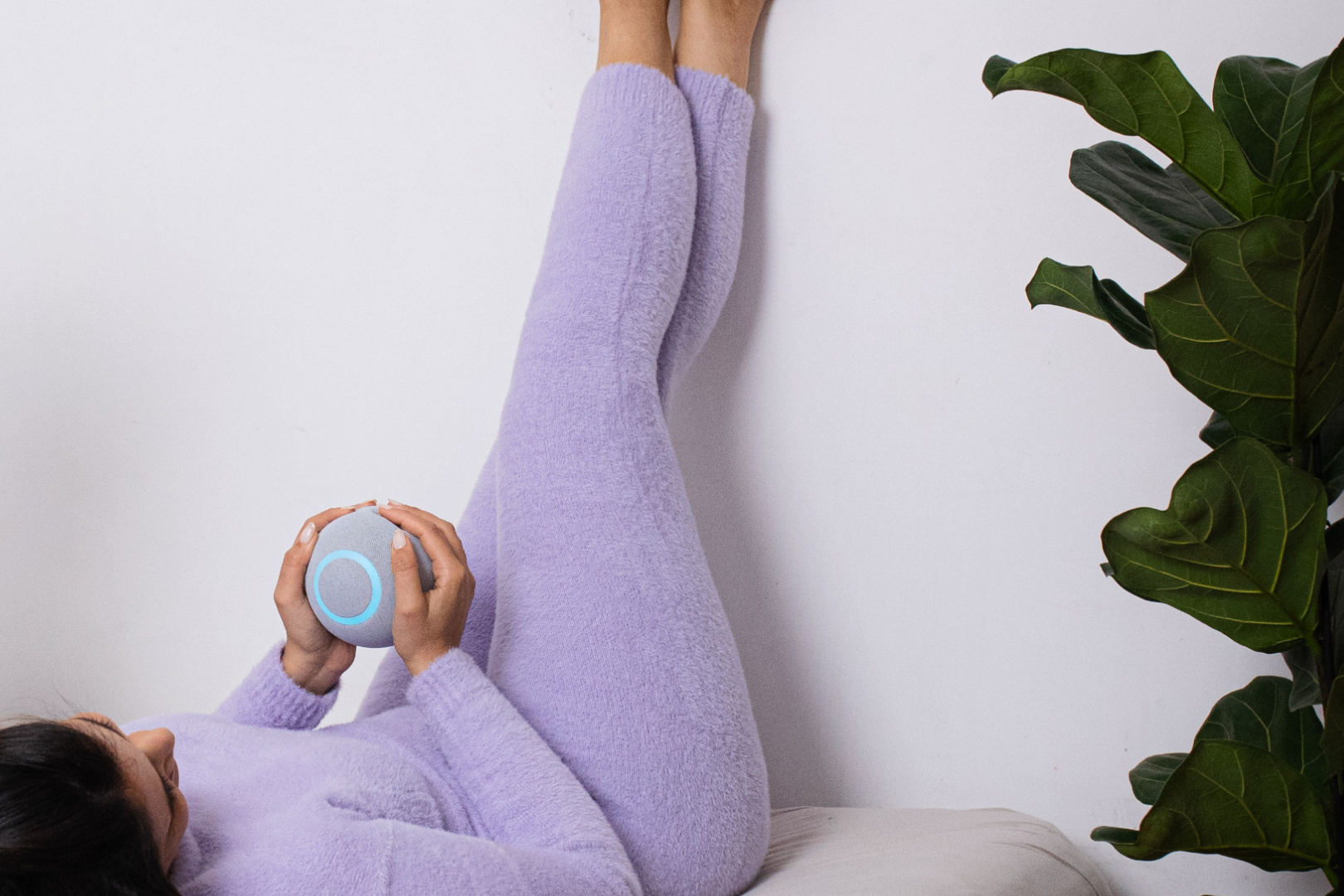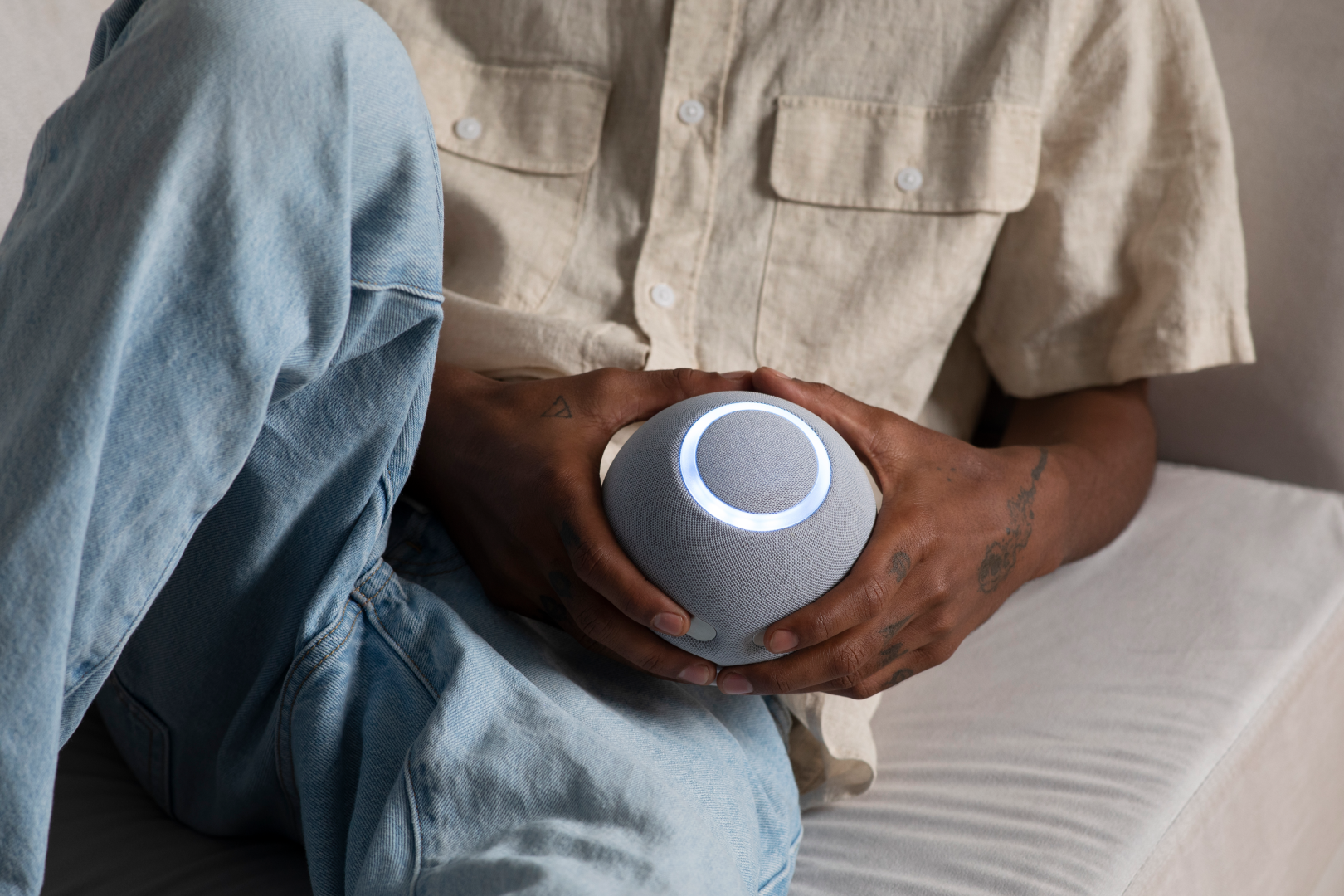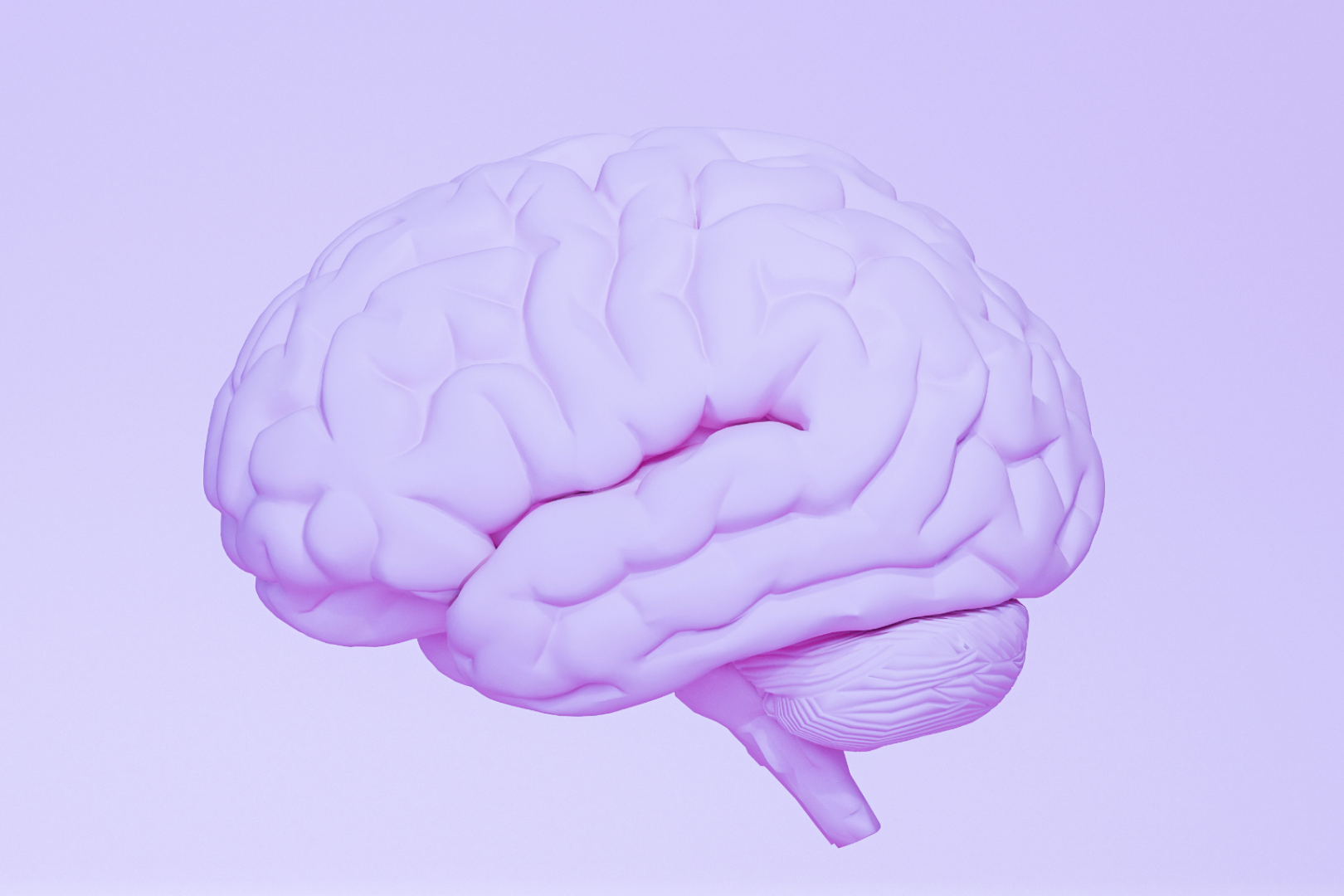In this article, we’ll take a closer look at the best home biofeedback devices and what you need to know before buying one.
Think back to just a decade ago. The smartphone was relatively new, and wearable tech, such as the smartwatch or FitBit, was just a fantasy. Today, most of the world’s population uses a smartphone (6 billion mobile phone plans globally!) and most of our everyday activities are done at home, with smart devices.
The same goes for biofeedback.
Once, biofeedback was limited to clinical settings – you had to see a doctor or biofeedback therapist with highly-specialized and very expensive equipment.
Now? There are several at-home biofeedback devices on the market, so people all over the world who are interested in trying out biofeedback on themselves, in the comfort of homes, can actually do so.
If you’re one of those people, keep reading.
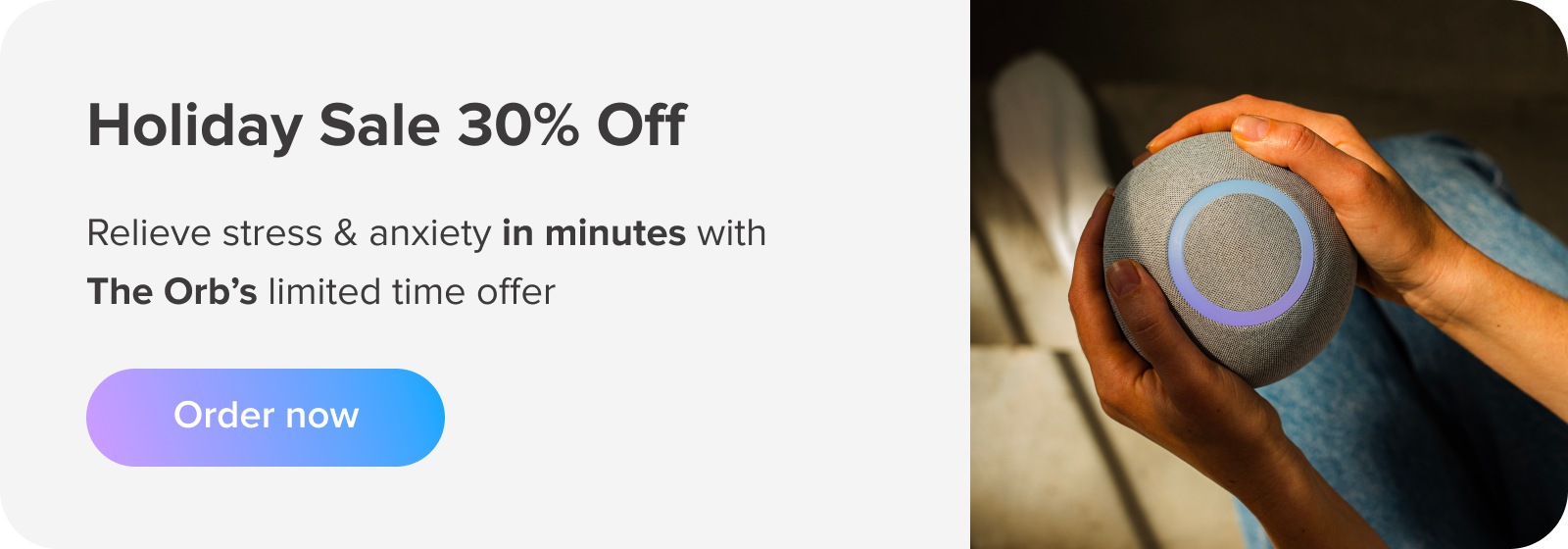
Biofeedback and Your Health
Biofeedback is a mind-body therapy that helps you identify various physiological changes as they occur in response to different stressors and situations. By being able to recognize them, you can learn to control them, leading to reduced stress and anxiety, and improved health and wellbeing.
During biofeedback, you are connected via skin sensors to a device that measures certain physiological markers, such as heart rate, muscle tension, and breathing patterns. These measurements are displayed on the biofeedback device in various visual and auditory ways. Either by yourself or with a therapist, you complete different relaxation exercises and receive immediate feedback from the device about involuntary physiological responses. For example, a slowing heart rate may be indicated by a slowing musical rhythm, or a light turns from red to blue to show that your brain wave activity has calmed.
The goal of biofeedback is to achieve small, subtle changes in the mind-body connection that help you cope with the symptoms of stress, by relaxing your body and practicing mindfulness.
An at-home biofeedback device is a training tool to help you practice mindfulness with or without meditation so that you can maintain your health and well-being during the everyday challenges and stress of life.
5 At-Home Biofeedback Devices
Doing biofeedback at home, on your own, is becoming a popular choice for people who are interested in the benefits of biofeedback therapy. Thanks to this increase in demand (and advances in technology), many at-home biofeedback devices are becoming available on the market, each with different functions, features, and capabilities.
Here are 5 examples of effective at-home biofeedback devices and what you can expect from each.
1. Reflect Orb Biofeedback Device
The Reflect Orb is an at-home biofeedback device that connects to an app to track your journey and help you to understand the effects of your practice.
The orb is fully portable and uses HRV (heart rate variability) and EDA (electrodermal activity) measurements that are taken through your fingers while holding the Orb.
The soft, round device changes color in response to your stress levels, guiding you toward a calmer state while the app tracks and analyzes your progress. The Reflect App will also give users meditation reminders and relaxation tips to help support you on your wellness journey. You can purchase the Reflect Orb and App for $199.00.

2. RESPeRATE
High blood pressure is a common health problem and biofeedback has been shown to help lower blood pressure in some people. RESPeRATE is a drug-free tool that uses guided breathwork for managing hypertension, and there is no shortage of clinical proof as to its effectiveness.
The RESPeRATE device features a sensor belt worn around the chest that monitors breathing, and an audio device that plays guiding melodies to regulate and deepen the breathing rate and depth. Slower respiration helps to calm the sympathetic nervous system and open up constricted blood vessels, leading to reduced blood pressure.
RESPeRATE is very easy to use, and the guided melodies adjust their rhythms automatically to the individual’s breathing rate, naturally transforming to calmer, slower respiration.
Over 50 clinical trials have demonstrated that RESPeRATE is safe and effective, with significantly lower blood pressure readings after three to four weeks of regular daily use.
The RESPeRATE device can be purchased for a one-time payment of $349.95, or in 4 interest-free installments of $87.49. The purchase comes with a 60-day money-back guarantee.
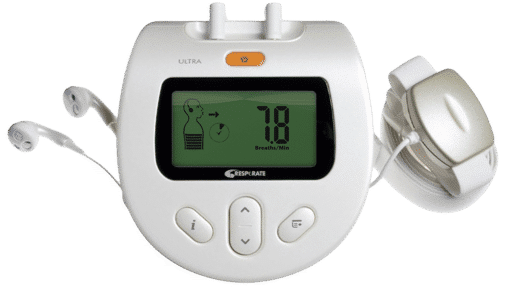
3. The EmWave2
The EmWave2 is a portable at-home biofeedback device that connects to your computer and uses heart rate variability (HRV) measurements to track subtle changes in your heart rate.
The device monitors coherence, a state of synchronization between the nervous system, brain, and heart. Coherence can help improve emotional health and well-being, as well as performance.
When your body is under stress, heart-rhythm patterns may become irregular, which can impact your brain function and well-being. Positive emotions promote a more coherent and ordered heart pattern.
EmWave2 is aimed at promoting sleep, relaxation, and focus, and ranges from $229.00 to $249.00.

4. UPRIGHT Posture Training
Most people slouch sometimes. But for some people, bad posture is an unhealthy habit that they can’t seem to break. Poor posture has been linked to a range of symptoms, such as neckache, headache, shallow breathing, and even digestion problems. Upright Posture Training Device aims to correct posture, help improve health issues associated with poor posture, and boost physical performance.
Upright is a wearable technology device with a built-in movement sensor that sits on your upper back. The sensor monitors your postural angle in real time, tracks posture data throughout the day, and sends the data to the Upright app.
The individual sets their goals in the app and gets instant feedback about their posture. When poor posture is detected, the Upright device vibrates, instantly reminding them to sit or stand up straight. Users have reported that this feedback helps them become more aware of their posture and reduces the likelihood of chronic neck and back pain associated with poor posture.
Upright is based on a combination of behavioral science and biofeedback methodology, with daily training intensity setups to challenge the individual to reach their desired posture goals.
The Upright app offers a personalized and supportive approach that includes daily progress reports, step-by-step tutorials and chat. Several clinical studies have validated the efficacy of Upright in improving posture and thousands of customers have provided verified reviews attesting to their satisfaction with Upright results.
The Upright GO 2™ Posture Trainer is available for purchase for $79.95. Several accessories and add-ons are available at extra cost, such as the flexible Upright Necklace, a sleek and comfortable way to wear the sensor. Every Upright purchase comes with a 30-day money-back guarantee.

5. Interactive Video Games
Numerous biofeedback video games have been introduced to the market in recent years for adults, teens, and kids. These are engaging and enjoyable ways to do biofeedback at home.
Studies of interactive video games that integrate biofeedback techniques have been shown to help reduce stress and anxiety. Some examples of biofeedback video games include:
- Deep
- MindLight
- Dojo
- StressJam; and
- Nevermind.
Can I Do Biofeedback at Home?
Biofeedback requires the use of sensitive equipment for accurate physiological measurement and tracking. For this reason, biofeedback was generally only available in clinical settings. Not anymore!
With advances in technology for personal use, more at-home biofeedback devices are becoming available, making it entirely possible to do “self-biofeedback” and get the benefits in your own space and time.
Medical Uses of At-Home Biofeedback Devices
At-home biofeedback devices can be used as a therapy option for treating a range of medical issues. Because biofeedback is safe and has no side effects, it can be used in addition to prescription medications or other medical treatments. Some of the medical uses of at-home biofeedback devices include:
- Blood pressure
- Muscle rehabilitation after injury
- Epilepsy and seizures
- Asthma
- Heart arrhythmia
- And more.
Depending on the type of at-home biofeedback device and treatment, during the session, one or more of the following physiological markers may be measured and tracked:
Heart rate: Using a finger or earlobe sensor, the device detects changes in blood volume and calculates the heart rate.
Muscle contractions: Sensors are placed over the skeletal muscles to monitor the electrical activity that causes minor involuntary contractions and tension.
Galvanic sweat response: Sensors on the fingers, palm, or wrist detect minuscule changes in the amount of sweat on the skin.
Breathing: Bands placed around the chest and abdomen measure changes in breathing rate.
Body temperature: Using sensors on the fingers or feet, blood flow is measured to determine a drop in temperature.
In addition to medical uses, at-home biofeedback training can be used to help manage a variety of mental or emotional issues, such as:
- Stress or anxiety
- Chronic pain
- Insomnia
- ADHD
- And more.
Benefits of Using a Biofeedback Device
Taking control of your health and wellness is the most obvious benefit of using an at-home biofeedback device. However, compared to clinical sessions, at-home devices offer two unique advantages.
First, clinical biofeedback therapy can range from $35 to $85 per session, depending on the type of therapy and the qualifications of the biofeedback therapist. For many people, this is not an affordable option.
While an at-home biofeedback device can range from $20 to $1,000, some of the best devices are in the $200 range, making them far more accessible. Plus, it is a one-time purchase that you can use for many years, giving you more value for money in the long term.
Secondly, a portable at-home biofeedback device offers the flexibility and convenience to do biofeedback at your own pace, whenever is convenient for you and in the comfort of your own home. With an at-home device, you can also integrate biofeedback into your existing wellness routine. For instance, if you meditate regularly, you can use an at-home biofeedback device to get even more from the practice.
What to Consider Before You Buy an At-Home Biofeedback Device
Before you invest in an at-home biofeedback device, here are some things to consider:
Know your goals.
The type of at-home biofeedback device you need will depend mostly on what you want to achieve from the therapy. Are you looking for:
- Relief from anxiety or stress?
- Help with pain management?
- Better meditation practice?
- Improved concentration?
The device must provide the measurement capabilities for the physiological marker that you want to track. Deciding what you hope to accomplish with your at-home biofeedback device before you buy will guide you toward choosing the best one for you.
Ease of use.
Any device that is easy to use will naturally fit better into your lifestyle and routine. For example, when using the Reflect Orb, simply place your hands on the orb and start gathering biofeedback. This simplicity makes it easier to include biofeedback as part of your routine and stick to it.
Cost vs function.
Not all devices are created equal. Always do a little research and examine the claims being made before you buy. You don’t want to waste money on a device that isn’t suited to your needs, and therefore won’t have the capabilities to help you achieve your desired outcome.
